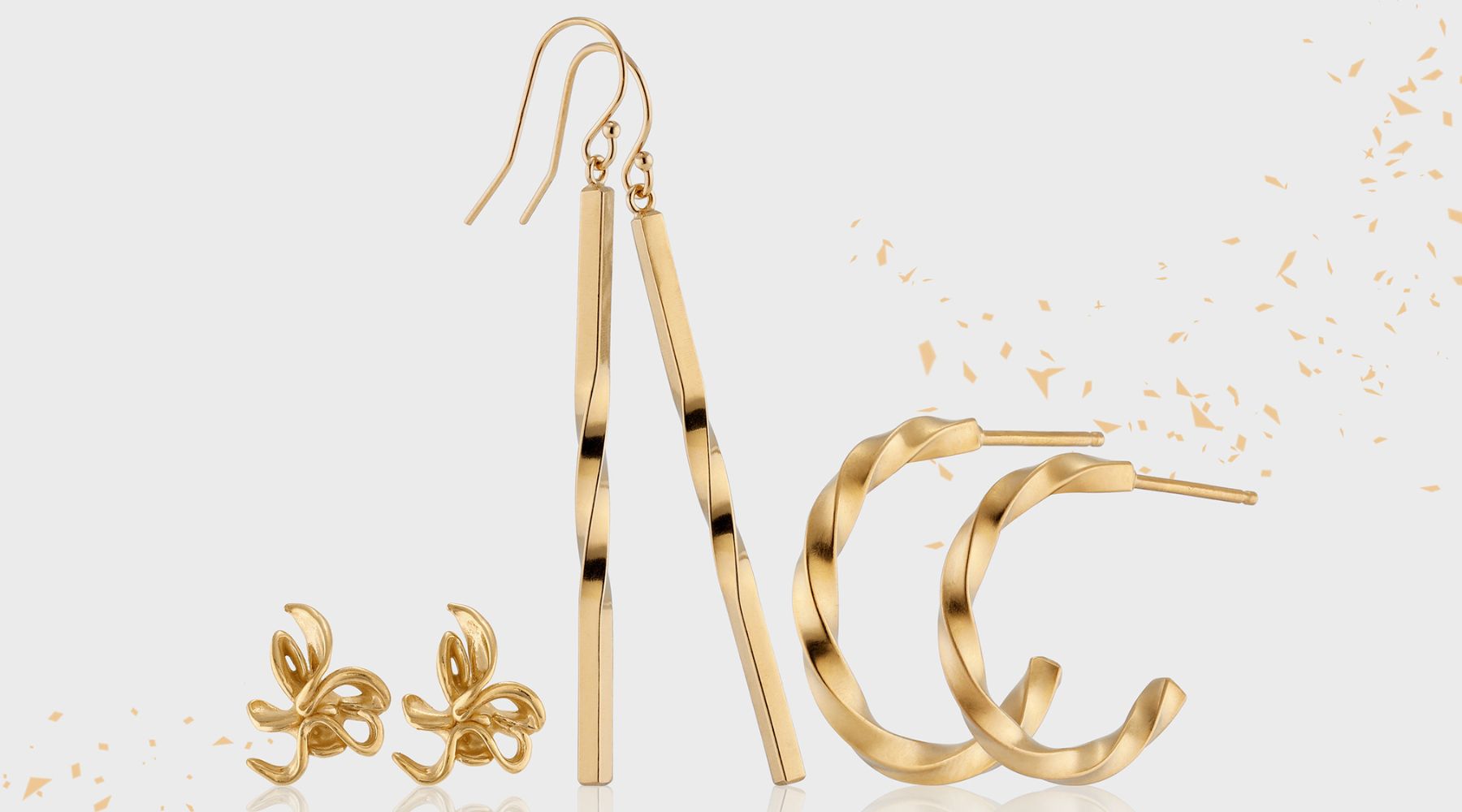
What is Gold Vermeil?
When shopping for gold jewelry, you've likely encountered several different classifications--gold-plated, gold-filled, gold-vermeil, and solid gold. So what does it all mean?
SOLID GOLD
Contrary to what the term implies, solid gold jewelry is not typically made exclusively out of gold. It is actually alloyed (i.e., mixed) with other metals to give it more strength. When gold is initially mined from the ground, it is 24k pure gold, which is too soft for practical wear. The addition of other metals--usually a combination of copper, silver, and/or zinc--gives the gold more durability. The amount of other metals that are added to the pure gold changes its purity, which is in turn reflected by the number of karats. So when we say a piece of jewelry is made out of 14k gold, this means that 14 parts out of the 24 parts are pure gold. It follows that the higher the karat designation, the more pure gold the piece contains.
This karat designation applies to any color of gold, be it yellow, rose, or white gold--all three "colors" of the same karat will have the same percentage of pure gold. The only thing that changes is the percentages of the other metals making up the alloy. For instance, 14k rose gold will have a higher percentage of copper to give it its pinkish hue, while 14k white gold will have less copper, but will have the addition of nickel to give it its white color.
(Interesting fact: Many people are puzzled to experience allergies after wearing white gold jewelry. The reason for this is the addition of nickel to give white gold its lighter color. If you love the look of white gold, but are sensitive to it, you may wish to give sterling silver or rhodium-plated silver pieces a try.)
Solid gold jewelry is the clear winner in terms of longevity and it's our pick for investment pieces that will be treasured for generations. However, it also comes at a high price point and is thus not the best option when looking to build a diverse collection of varied jewelry pieces for everyday wear.
GOLD-PLATED
When it comes to reasonably priced options, most costume and mid-range fashion jewelry we come across is gold-plated. This means that the jewelry piece is typically fabricated in a base metal such as brass, and then plated with a layer of gold just barely thin enough to give it a golden color. Prior to the gold plating, the base metals are also usually covered with a layer of nickel, which serves as a "primer" of sorts for the gold plating.
If you have ever encountered redness, itchiness, or irritation after wearing gold-plated jewelry, you’ve likely experienced an allergic reaction to nickel. Or if you’ve ever had the unfortunate experience of having your skin turn green after donning gold-plated pieces, you can thank the base metal's heavy copper content for that reptilian hue. The thin layer of gold on gold-plated jewelry deteriorates quickly (often within a year), exposing the skin to the nickel underplate and the base metal thereunder. As a result, gold-plated pieces often prove problematic for people with jewelry sensitivities.
GOLD VERMEIL
Gold vermeil (pronounced "vur-may") truly hits the sweet spot, and that's because it is not as highly-priced as solid gold jewelry, but still offers significant durability. Vermeil means "gilded silver." Unlike gold-plated jewelry, it is made entirely of precious metals. Jewelry must meet two stringent requirements in order to qualify as vermeil:
- It must consist of 925 sterling silver (92.5% pure silver) plated with gold that is 10k or higher; and
- The gold plating must have a minimum thickness of 2.5 microns (0.0025 millimeters).
This 2.5 micron plating is so thick (compared to the 0.175-1.0 microns used in standard gold-plating), that the gold layer will last for many years with proper care. Even when the plating begins to wear over time, it wears down elegantly, and it is reassuring to know that anything that may be exposed is another precious metal. This is wonderful news for those who have experienced allergic reactions to jewelry. Pure sterling silver is, by nature, a hypoallergenic precious metal and safe for those with skin sensitivities to metals. It is also worth noting that vermeil does not require a nickel underplate like standard gold-plating does.
Gold vermeil is defined by very strict standards in the jewelry industry. You may often come across pieces labeled "vermeil," but unless the thickness of gold can be certified as being at least 2.5 microns thick, the piece is still gold-plated, not vermeil. Price will often be an indicator, due to the very heavy layer of gold in genuine vermeil pieces. When in doubt, ask the jeweler to see certification of its vermeil thickness. At Petit Anjou, we adhere to the stringent jewelry trade standards with respect to our vermeil pieces.
GOLD-FILLED
The difference between gold-filled jewelry and vermeil lies in the manufacturing process. With vermeil, an electrochemical process is used to coat the underlying silver with a thick layer of gold. With gold-filled, the gold is mechanically fused onto an underlying metal--which may be silver or brass--using extremely high pressure and heat bonding.
The resulting layer is extremely resilient, and gold-filled jewelry poses virtually no irritation risk to sensitive wearers due to the durability of the gold layer. If well-cared for, gold-filled jewelry can last a lifetime and is often comparable in quality to solid gold jewelry. This typically also comes with a higher price point, but may be a worthwhile investment for those who want very low-maintenance pieces.



